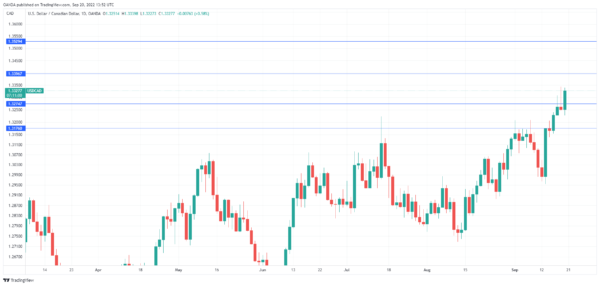The Canadian dollar is sharply lower today. In the North American session, USD/CAD is trading at 1.3329, up 0.59% on the day.
Canada’s inflation surprises to the downside
Canada’s August inflation report fell to 7.0%, down sharply from 7.0% in July and below the consensus of 7.3%. This marks a second straight decline. On a monthly basis, inflation fell 0.3%, the first decline since December 2021, which was early in the Covid pandemic. All three measures of core inflation eased in August. The inflation report appears to indicate that inflation has finally peaked, which has sent the Canadian dollar sharply lower. The news was not all good, as food prices continue to accelerate and hit their highest level since 1981.
The Bank of Canada can take the lion’s share of the credit if inflation has indeed peaked, with an aggressive rate-hike cycle that has lifted the benchmark rate to 3.25%. The BoC has pressed the rate pedal to the floor, arguing that front-loading and then easing up is the most effective way to battle inflation. The Bank delivered a 75bp increase earlier this month, and today’s inflation news provides the BoC with room to lower rates. The markets have priced in a 50bp at the October meeting, followed by a modest 25bp hike in December. That would lift rates to an even 4.00%, which would be the highest since 2008, during the GFC.
The Federal Reserve, which meets tomorrow, is poised to raise rates by 0.75%, with an outside chance of a massive full-point hike. The Fed could lead to further losses for the Canadian dollar, especially if Fed guidance is hawkish. After falling behind the inflation curve, the Fed has embarked on a sharp rate-tightening cycle, which has raised concerns that the US economy will sustain a hard landing and tip into a recession.
USD/CAD Technical
- There is resistance at 1.3397 and 1.3529
- USD/CAD has support at 1.3274 and 1.3175














